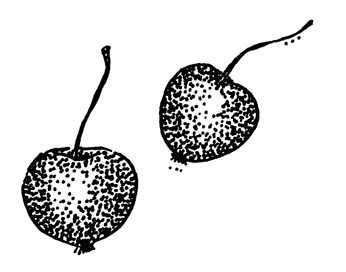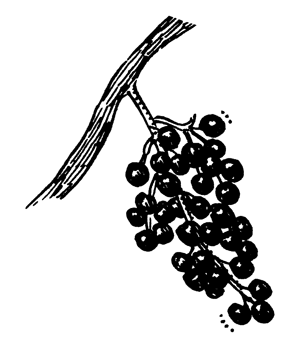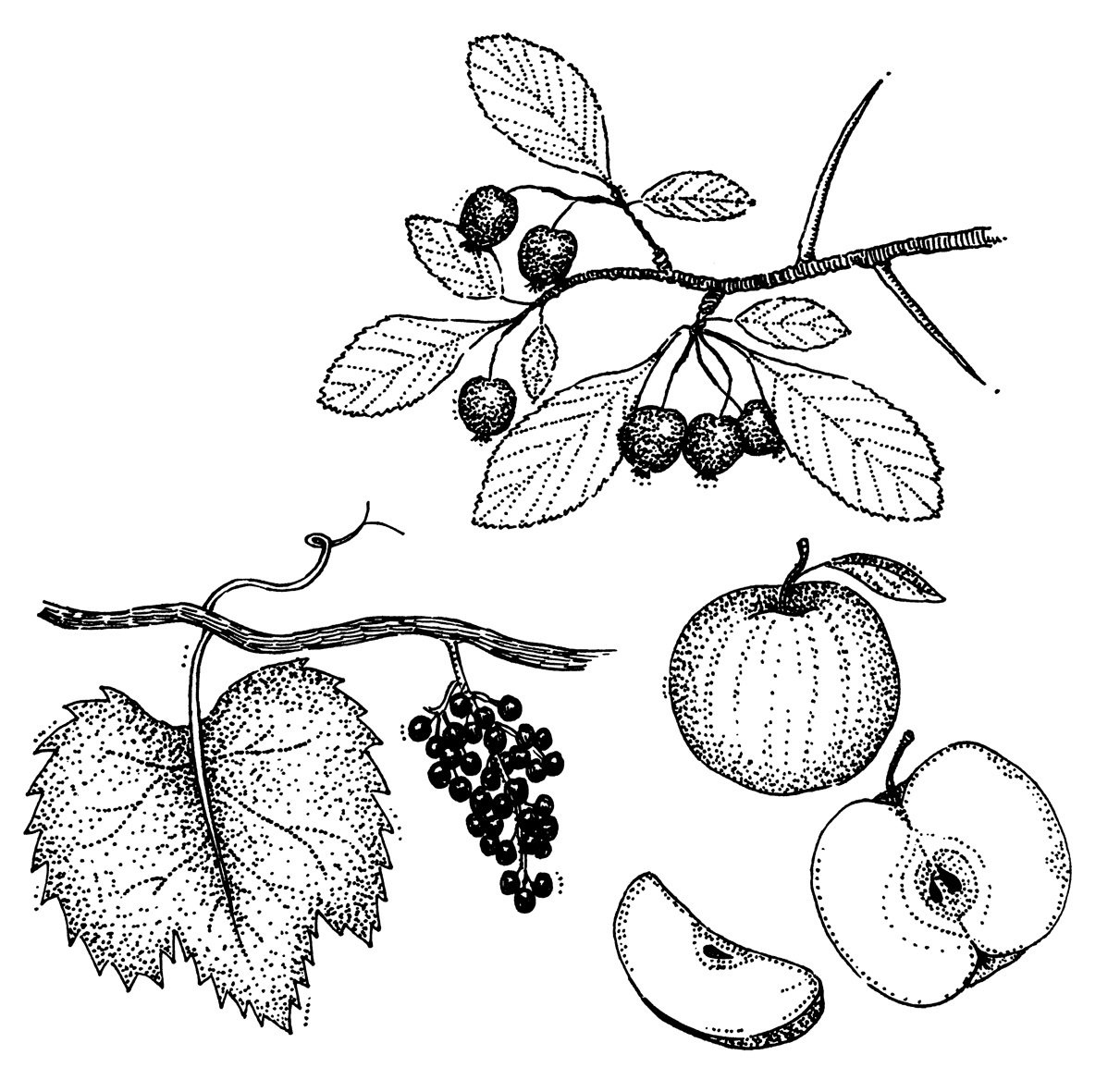

Chokecherries are common and widespread. They grow on small or tall bushes along hedgerows and fence lines and at the edges of forested areas. The plants are quite easy to recognize in springtime, when they are covered with flowers that grow in cylinder-shaped clusters that hang from the bushes like frilly decorations.
In late summer, these small red cherries turn to burgundy and nearly black ... that is the best time to pick When eaten raw, chokecherries are unpalatable and astringent and will make your mouth pucker. Perhaps this is why they are called “choke” cherries. But the fruit is wonderfully tasty when used in jellies and syrups; it produces a deep purplish red color when cooked.
When it is a good year for chokecherries, they are easy to pick and can be gathered very quickly. Fistfuls of cherries can fill buckets in no time flat. The only problem you might have is beating the birds to these tasty treats. When you are picking, bear in mind you are sharing nature’s bounty with other creatures. Don’t pick them all ... leave a few for others in search of their dinner.
Never eat the pits or wilted leaves of the chokecherry. They contain hydrocyanic acid, so do not eat them! However, since cooking the fruit destroys the cyanide, pitting is unnecessary. If eating a raw chokecherry, be sure to spit out the pit!
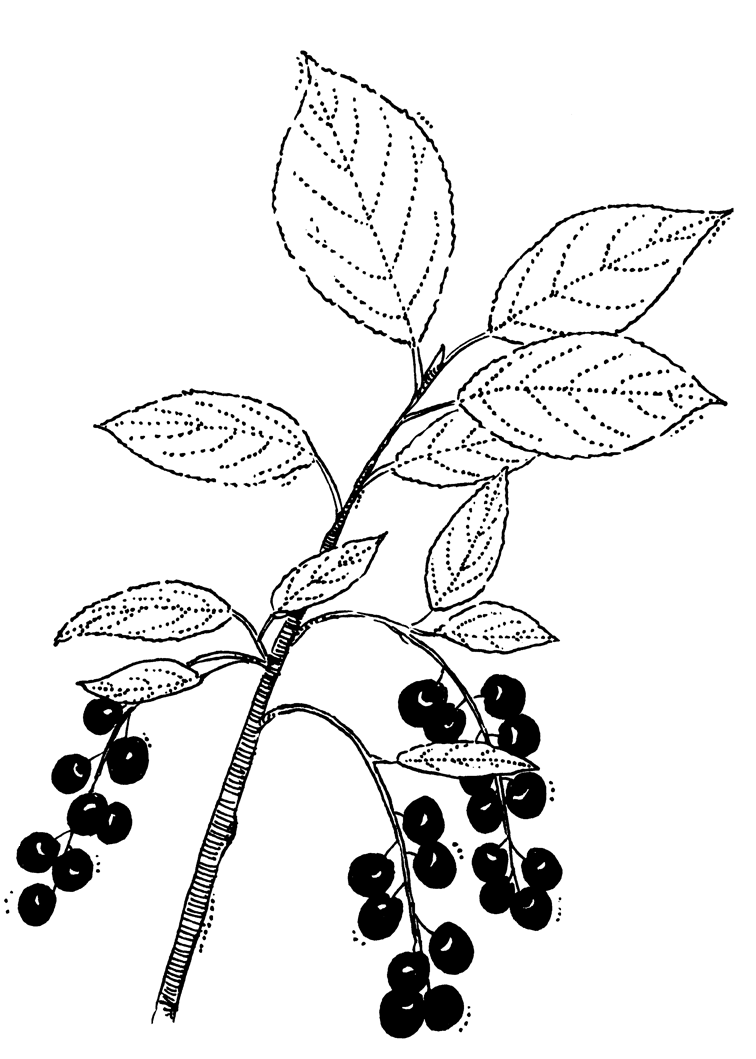
Spreading this conserve on your morning toast is an elegant way to start your day.
5 cups chokecherries
½ cup water
3 medium apples, peeled and chopped
juice and zest of 1 orange.
juice and zest of 1 lemon
2½ cups sugar
1 cup pecan halves
Wash and pick over chokecherries, removing any leaves. Do not remove tiny stems or pits. Put the chokecherries and water in a large pot and cook at medium-high, until the cherries are softened and split, about 10 minutes. Put through a food mill or heavy sieve, making sure to press the pulp through. This should yield about 1⅓ to 1½ cups juice and pulp.
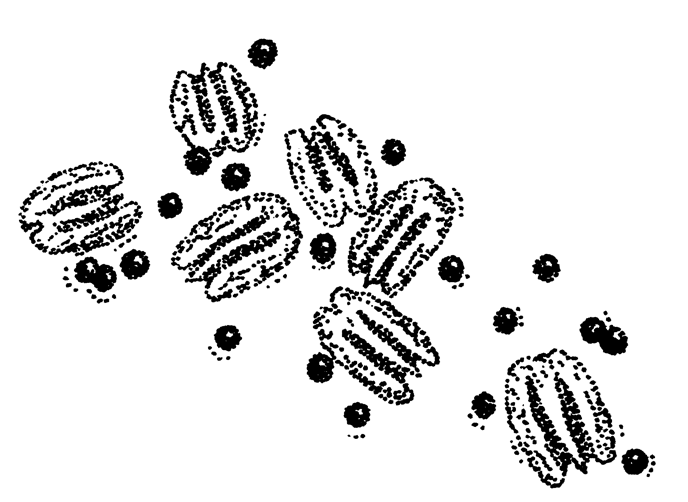
Put juice and pulp into a clean pot. Then add the apples, the juice and zest of the orange and lemon, and the sugar. On high heat, bring to a full boil. Reduce heat to medium, stirring to make sure that the mixture doesn’t stick. Skim foam off the top and discard. Keep boiling and stirring until the mixture starts to thicken, about 15–20 minutes. (It will be a soft set, like a thick pudding.) Add pecans and return to a boil for a minute. Bottle in hot, sterilized jars. Process in a hot water bath (see pages 14–15 for instructions). Makes 4 half-pint (250mL) jars.
A great accompaniment to plain chicken, or spread it on your next grilled cheese sandwich for a real change.
6 cups chokecherries
2 apples, quartered
1 cup water
1½ cups brown sugar
1½ cups cider vinegar
1 tablespoon ground ginger
1 teaspoon salt
1 teaspoon cinnamon
½ teaspoon allspice
½ teaspoon ground cloves
½ teaspoon ground pepper
½ teaspoon cayenne pepper
2 tablespoons fresh ginger, minced
2 cloves garlic, minced
1 cup chopped onions
1 cup raisins
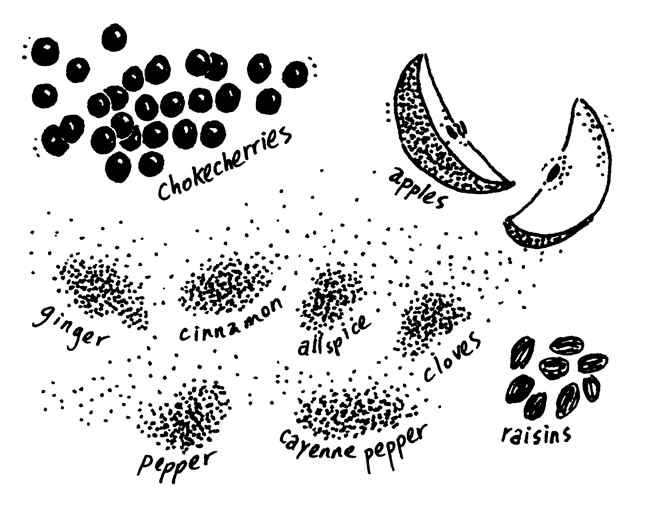
Wash the chokecherries well, discarding any leaves. Add them to a pot along with the apples. (Do not peel apples, but remove and discard blossom ends.) Add water and cook until the apples are soft, about 20 minutes. Put mixture into a food mill or strong sieve and push through juice and pulp. You should have a little over 2 cups of liquid and pulp.
Add liquid and pulp to a large pot along with all the other ingredients. Bring to a boil and then turn heat down to low. Slowly simmer mixture, uncovered, until it has thickened, about 1 to 1½ hours. Make sure to stir it often so it does not stick to the bottom of the pot. Pour into hot, sterilized jars and seal immediately. Process in a hot water bath (see pages 14–15 for instructions). Makes 3 half-pint (250 mL) jars.
5 cups chokecherries
1 cup water
1 orange
2 lemons
2 tablespoons fresh ginger, grated
2 cups sugar
Wash the chokecherries well, but do not bother to remove the tiny stems or pits. Put them in a pot, along with the water, and cook for 10 minutes until the chokecherries have softened. Pour into a food mill or sieve and press the pulp and juice through. Yield should be about 2 cups.
Into a clean pot add the 2 cups of chokecherry juice and pulp. To that, add the orange and lemons, quartered and sliced very thin (peel and all, but discard the pits). Add the fresh ginger along with the sugar to the pot. Bring the mixture to a boil, then reduce heat and simmer gently for nearly an hour. Stir periodically to ensure that nothing sticks. When you can draw a spoon across the bottom of the pot and it leaves a clear channel (for a few seconds), your chokecherry marmalade is ready. Pour into sterilized jars immediately, and seal with hot lids. Process in a hot water bath (see pages 14–15 for instructions). Makes 3 half-pint (250 mL) jars.
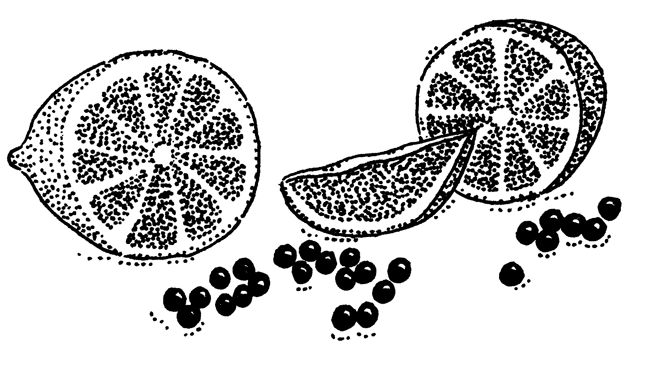
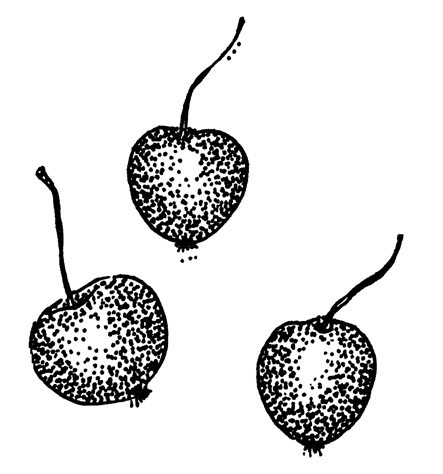
Growing in rocky fields and abandoned lanes or along old fences, wild apples of various shapes and sizes can be found all over the countryside. In spring, their pink and white blooms cover the tree entirely. In the fall, their branches are heavy with fruit. Red, yellow, striped, green, speckled, spotted. That’s just a short description of wild apples.
Wild crabapples are generally smaller than full-fledged wild apples but can often be found as big as 2 inches across. Crabapples are yellow, red, or both. They are too hard and tart to eat raw, but they are full of pectin and make a tasty jelly.
Wild apples are a painter’s delight. And a gastronomic one, too. Each tree seems to bear fruit with a taste all its own. Try to overlook the fact that most are misshapen or scabby. These are not the apples you’ll find at the grocery store! If you find several trees, take the time to taste each one. Some are mealy; others are sweet or tart. Take a selection of fruit home to make a different-tasting apple-sauce. Or chop some up into a cake batter. The possibilities with apples, especially wild ones, are limited only by your imagination.
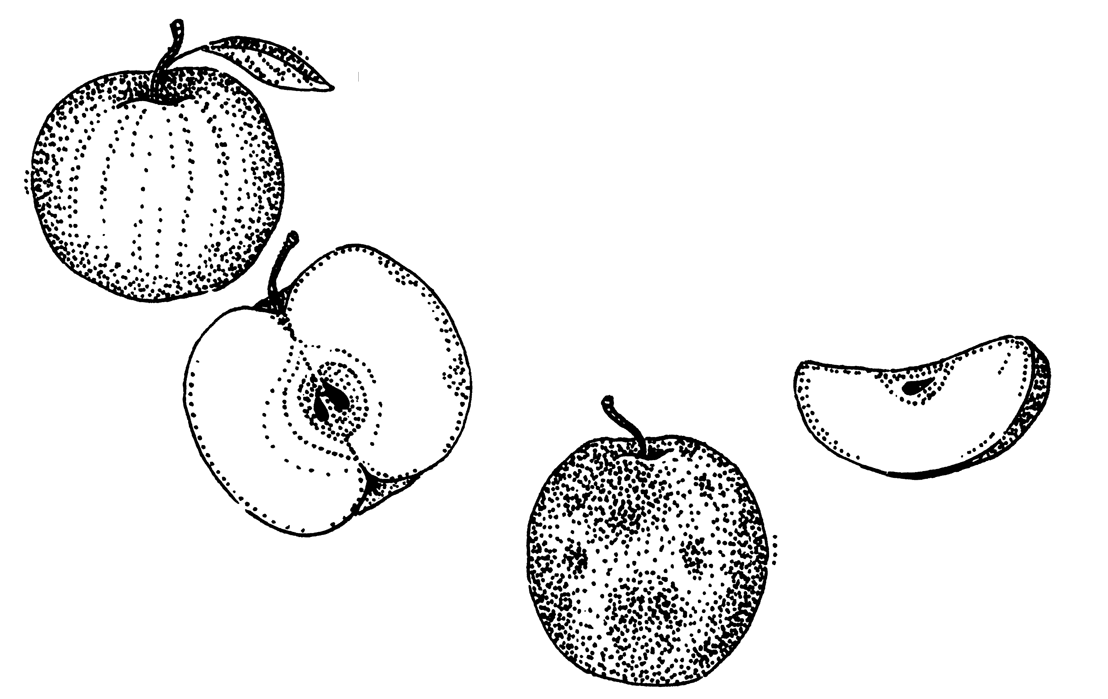
This savory recipe can be served as a side dish with poultry or chops.
4–5 pounds of crabapples
2½ cups white vinegar
2 cups water
4 cups sugar
In a cheesecloth bag:
1 tablespoon whole cloves
3–4 cinnamon sticks
1 3-inch piece of fresh, peeled ginger
Wash and remove blossom ends of crabapples (leave the stems on). (You may insert a whole clove to fill this hole, but although it looks great, it is time consuming.) Prick each crabapple a few times, so that they don’t burst while cooking.
Heat vinegar, water, and sugar to boiling in a large pot. Add the spices in the cheesecloth bag. Then add the crabapples and cook for 2–3 minutes. Remove the pot from the burner, cover, and set aside to cool overnight.
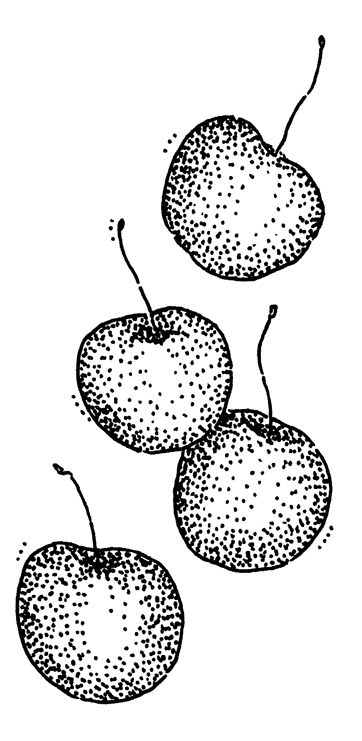
In the morning, sterilize jars in boiling water and pack apples into the hot jars (discard the spice bag). Meanwhile, heat the liquid from the pot to boiling and pour over fruit. Make sure there are no air bubbles and seal with hot lids. Process in a hot water bath for 30 minutes (see pages 14–15 for instructions). Makes 5–6 pint (500 mL) jars.
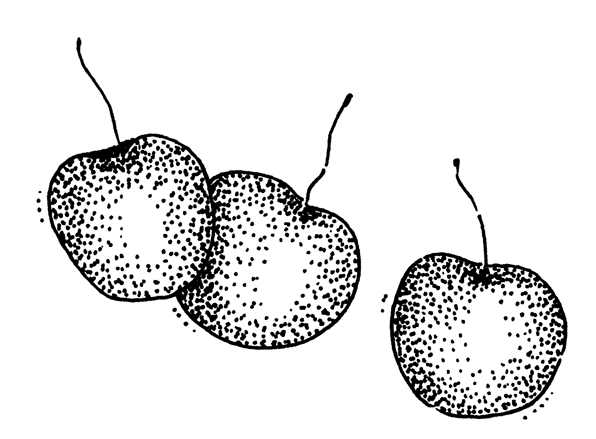
Spread this wonderful stuff onto hot toast for a mouthwatering breakfast.
4–5 pounds wild apples
2½ cups sweet apple cider
3½4 cups brown sugar (to taste)
2 teaspoons cinnamon
½ teaspoon ground cloves
½ teaspoon ground allspice
juice and zest of 1 lemon
juice and zest of 1 orange
Quarter the wild apples, but do not peel or core them. (Be sure to cut out all the wormy or bruised parts.) Put the apples into a large saucepan with the apple cider. Cook uncovered until soft, about 30 minutes. Strain pulp through a food mill or sieve, leaving behind the skin and seeds.
For each cup of puree, add about a half cup of brown sugar (taste it and see how sweet you like it). Add the spices and the juice and zest of the lemon and orange, and let it bubble over very low heat for 2–3 hours until thickened to a spreadable consistency. Stir it every half hour, to make sure it hasn’t stuck to the bottom of the pot. Watch carefully, as this mixture can burn quite easily. Seal in hot, sterilized jars. Process in a hot water bath (see pages 14–15 for instructions). Makes 4–5 half-pint (250 mL) jars.
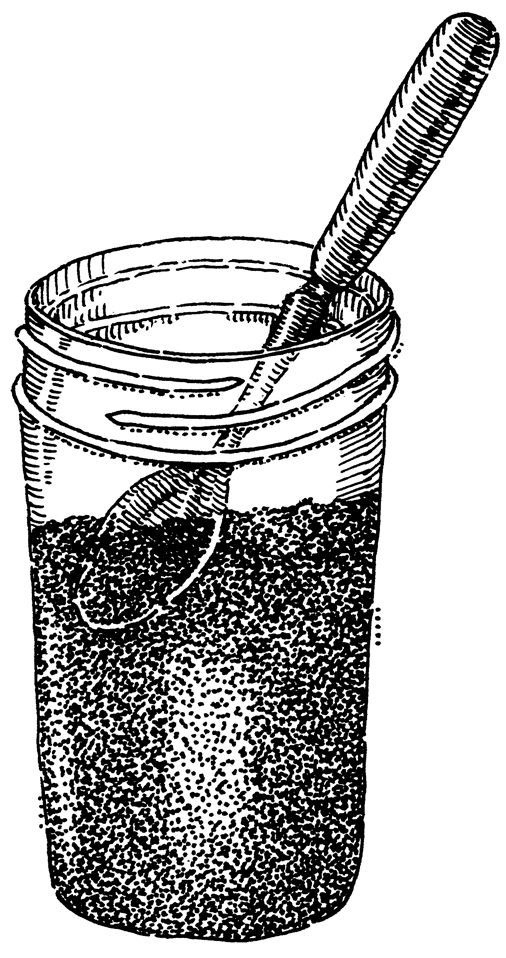
The topping sauce envelops the wild apples in a caramel bath. Just delicious!
2 tablespoons butter
½ cup sugar
1 cup flour
1 teaspoon baking powder
1 teaspoon cinnamon
pinch of salt
2 cups wild apples, peeled and chopped
½ cup raisins or dried cherries
6 tablespoons milk
Topping:
¾ cup brown sugar
1 tablespoon butter
1½ cups boiling water
1 teaspoon vanilla
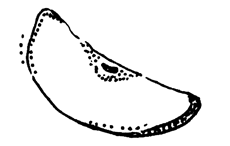
In a medium-sized mixing bowl, cream butter and sugar with a wooden spoon. In a separate bowl, mix together flour, baking powder, cinnamon, and salt. Then add chopped apples and raisins or cherries. Add the apple mixture to the creamed mixture alternately with the milk until everything is combined. Spread into a deep, 9-inch square (ungreased) dish and set aside.
For the topping: In a medium-sized bowl, add sugar, butter, and boiling water and stir until the sugar dissolves and the butter melts. Add the vanilla and pour over apple batter. Bake at 400°F for 30–35 minutes, until bubbly and brown on top. Let cool and top with a dollop of whipped cream. Serves 6–8.
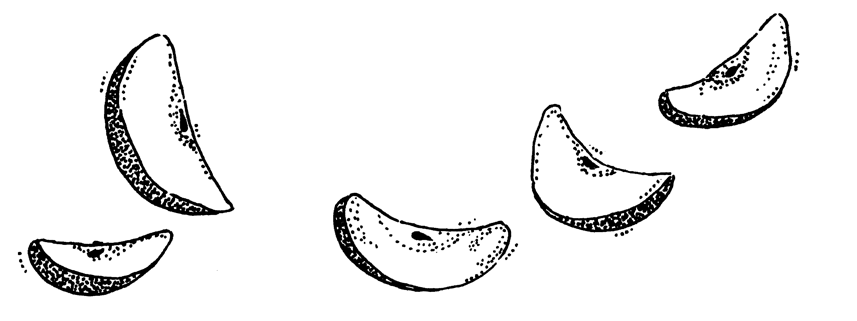
1 tablespoon oil
1 tablespoon mustard seeds
1 onion, diced
1 red pepper, diced
1 tablespoon fresh ginger, grated
1 teaspoon salt
2 cups wild apples, peeled, cored, and chunked
½ teaspoon cinnamon
1 teaspoon ground ginger
1 teaspoon ground allspice
⅓ cup raisins
1 cup brown sugar
¾ cup red wine or cider vinegar
1 cup water
In a large saucepan, heat oil on high heat and add mustard seeds. Cover the pot and cook until the popping stops (this toasts the mustard seeds). Make sure not to burn them. Lower the heat and add onions, red pepper, fresh ginger, and salt. Over medium-low heat, cook uncovered until the onions have softened, about 5 minutes.
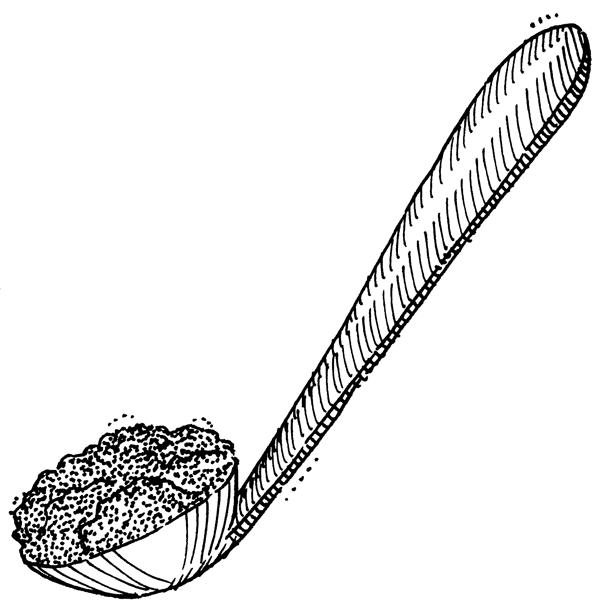
Stir in the remaining ingredients and bring to a boil. Lower heat and simmer slowly until mixture is thick, about 1½ hours. Make sure to stir from time to time, so that the mixture doesn’t stick to the bottom of the pot. Pour into sterilized jars. Process in a hot water bath (see pages 14–15 for instructions). Makes 2 half-pint (250 mL) jars.
There are more than 50 native species of wild grapes growing in North America. They are smaller than their domestic cousins and a lot more tart! Wild grapes grow all over the countryside ... on old fences and right up the trunks and branches of trees.
The leaves are large, coarsely toothed and somewhat heart shaped. They are edible and best when they are young, in spring or early summer.
The grapes themselves are very small and dark purple when ripe. Since they are fairly acidic, it is best to eat them cooked with sugar. Wild grapes are good in preserves, jelly, pies, and wine. They are sweetest after the first frost, but if you are making jelly, along with the purple fruit pick some green ones, as they contain pectin.
Avoid the poisonous Canada Moonseed, which looks similar to the wild grape. It grows on a vine but has no tendrils and its leaves are more rounded and not toothed like the wild grape. The Moonseed has a single, flattened seed inside its unpalatable fruit. The wild grape contains 2–4 roundish seeds.
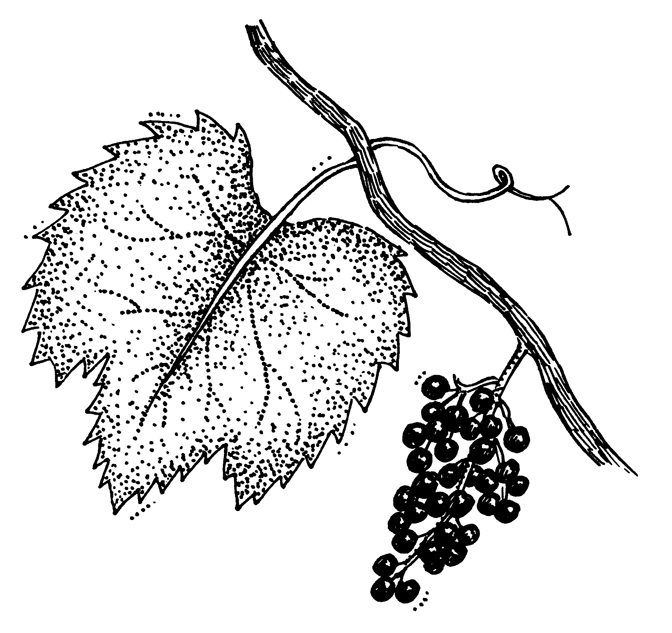
If you pick unripe (green) grapes along with the ripe (purple) ones, there will be enough pectin for this jelly to gel.
8–10 cups wild grapes
2 cups water
sugar (see below)
1 envelope pectin (optional)
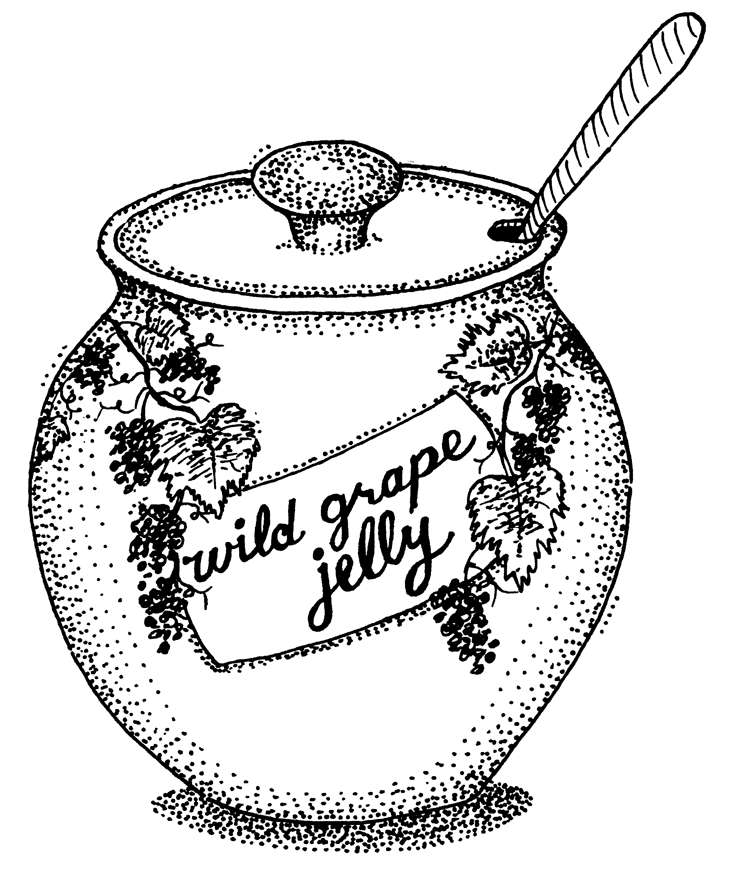
Rinse wild grapes thoroughly in running water, discarding any moldy or spoiled fruit. Remove some of the larger stems, measure roughly, and put the grapes into a large pot. Mash the fruit with a potato masher and add water. Bring to a simmer for 15–20 minutes, until the fruit has softened. Strain the juice through a food mill or heavy sieve, leaving the stems, skins, and seeds behind. Discard these and set the juice aside in a pot, overnight.
Next morning, pour off the juice, leaving any crystals that might have formed at the bottom of the pot. Rinse the crystals out. Measure the juice back into the clean pot and add an equal quantity of sugar. Bring to a rolling boil until the gel point has been reached (about 15–20 minutes). Be sure to skim off any foam that may have formed on the surface. (If it doesn’t gel at this point, you may need to add one envelope of pectin powder or liquid.)
Seal in sterilized jars. Process in a hot water bath (see pages 14–15 for instructions). Makes about 6–8 half-pint (250 mL) jars.
The ground cherry is a member of the Nightshade family and perhaps less famous than its familiar cousins. The tomatillo used in Mexican cooking is one well-known relative, as is the decorative Chinese lantern plant with its bright orange lanterns. Another cousin is the Hawaiian poha. Its most famous kin is the tomato.
Ground cherries are also known as Cape gooseberries, husk tomatoes, or strawberry tomatoes. There are several wild species of the Physalis genus (the term Physalis is Greek for the “bladder” that surrounds the fruit), to which the ground cherry belongs, growing throughout most of the United States and Canada.
The plants sprawl across the ground, growing on top of grass or other weeds, to about 12 to 18 inches in length. They produce small bell-like flowers, which are pale yellow with a brownish interior. In midsummer, these flowers produce a five-sided green lantern, which contains a blueberry-sized fruit. Unripe, the berry is green, but when it ripens (in late summer or early fall) it turns orange-yellow. Many times, the paper husk, which turns brown when the fruit ripens, falls to the ground and gets lacy, freeing up the berry to be lost in the weeds. That is when the fruit is tastiest, so check the ground under the lantern. You’ll usually find the fruit lying right underneath it.
Like the tomato, the ground cherry’s leaves are poisonous. Some say the unripe fruit is as well, so be sure to pick the berries when they are yellow or orange and the lanterns are papery and antique looking. Avoid eating green berries.
Since the berry is filled with many tiny seeds, I save the overripe fruit (ones that have turned brown) to dry and plant in my own “wild” garden the next year.
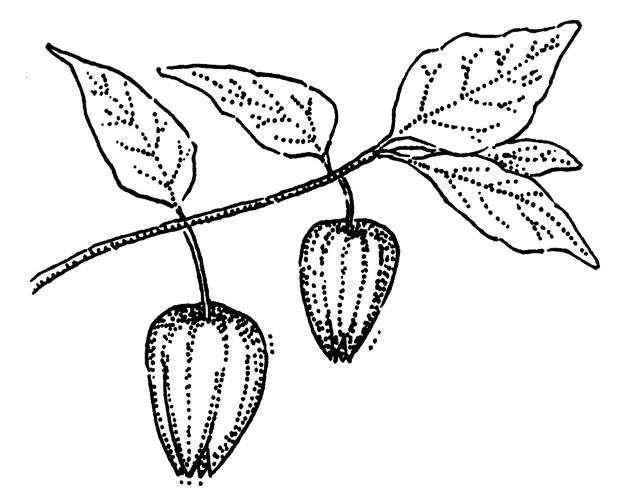
This stuff is just wonderful. It has the consistency of honey and tastes a little like it, too.
2 cups ground cherries
Enough water to cover (about 2 cups)
1½–1¾ cups sugar
4–5 ground cherries, set aside for decoration
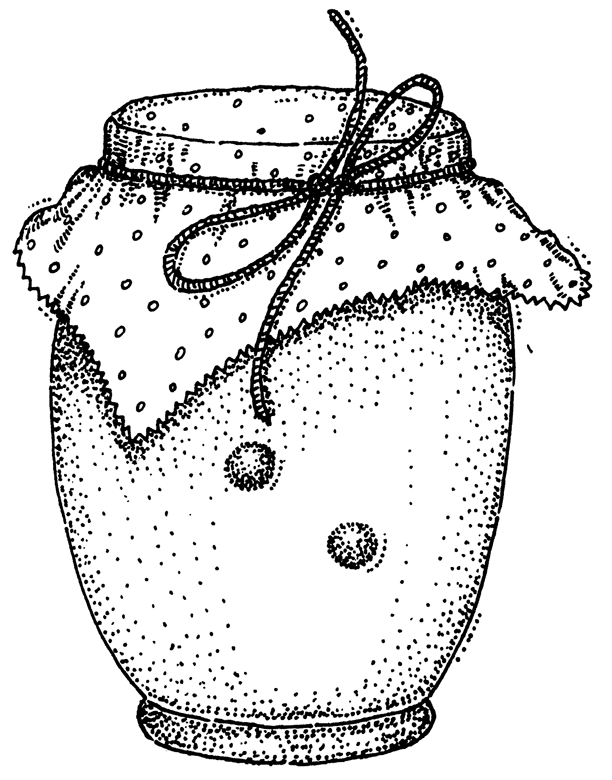
Remove paper lanterns and stems from the cherries and rinse clean. Add them to a small saucepan and add enough water to cover. Bring to a boil. Crush the cherries and let simmer until soft, about 15–20 minutes.
Pour the cooked cherries into a jelly bag and let drip. (I squeeze the bag to get all the juice possible, but this leads to a bit of a cloud in your jelly.) You’ll end up with about 1¾ cups of juice. Put this into a clean pot, add about 1½–1¾ cups of sugar (depending on how sweet you like your jelly), and bring to a boil. Let this mixture simmer for about 15 minutes until gelling stage is reached. Pour into jelly glasses and seal.
If you’d like to add several ground cherries into the jelly, let it cool a bit until semiset. Then, in each jar insert 1 or 2 fresh ground cherries to float in the jelly. Push them into the jelly with a wooden skewer, making sure not to create any air pockets, and seal.
Process in a hot water bath (see pages 14–15 for instructions). Makes about 2 half-pint (250 mL) jars. For gifts, it might be a good idea to use the tiny quarter-pint (125 mL) jars so that more people can have a taste of this special jelly.
